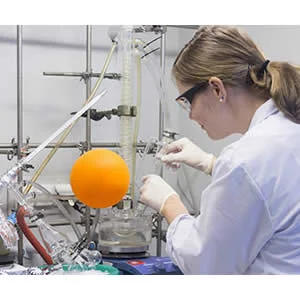Vienna University of Technology and Vienna Medical University have developed artificial blood vessels from a special elastomer material which has excellent mechanical properties.
Arteriosclerotic vascular disorders are one of the most common causes of death in industrialised countries. In many cases, a bypass operation is the only option when blood vessels from another part of the body are used to replace the damaged vessel. However, this joint project by TU Wien and the Medical University of Vienna can make the use of artificially manufactured vessels a possibility in the future.
To date, the material used to create artificial blood vessels was not ideally compatible with body tissue. But this team has developed new polymers. "These are so-called thermoplastic polyurethanes," explains Robert Liska from the Institute of Applied Synthetic Chemistry of Vienna University of Technology. "By selecting very specific molecular building blocks we have succeeded in synthesising a polymer with the desired properties."
They spun the polymer solutions in an electrical field and formed fine threads that were wound onto a spool. The walls of the artificial vessels are very similar to the natural ones. The fabric that has been used is slightly porous thus allowing a small amount of blood to permeate through and enrich the wall with growth factors and encouraging the migration of endogenous cells.
The method has already been tested in rats and the rat blood vessels were examined six months after insertion of the vascular prostheses. No signs of aneurysms, thrombosis or inflammation were found. The endogenous cells had colonised the vascular prostheses and had turned the artificial constructs into body tissue.
The TU Wein and Medical University of Vienna's project has been awarded PRIZE prototype from Austria Wirtschaftsservice (AWS).
Further adaptations are expected to be made to the material and more preclinical trials are also to be conducted before these vessels can be used in humans.
Source: Medical University of Vienna
Image Credit: TU Wien and MedUni Vienna
References:
Helga Bergmeister et al. (2015) Biodegradable, thermoplastic polyurethane grafts for small diameter vascular replacements. Acta Biomaterialia. http://dx.doi.org/10.1016/j.actbio.2014.09.003









